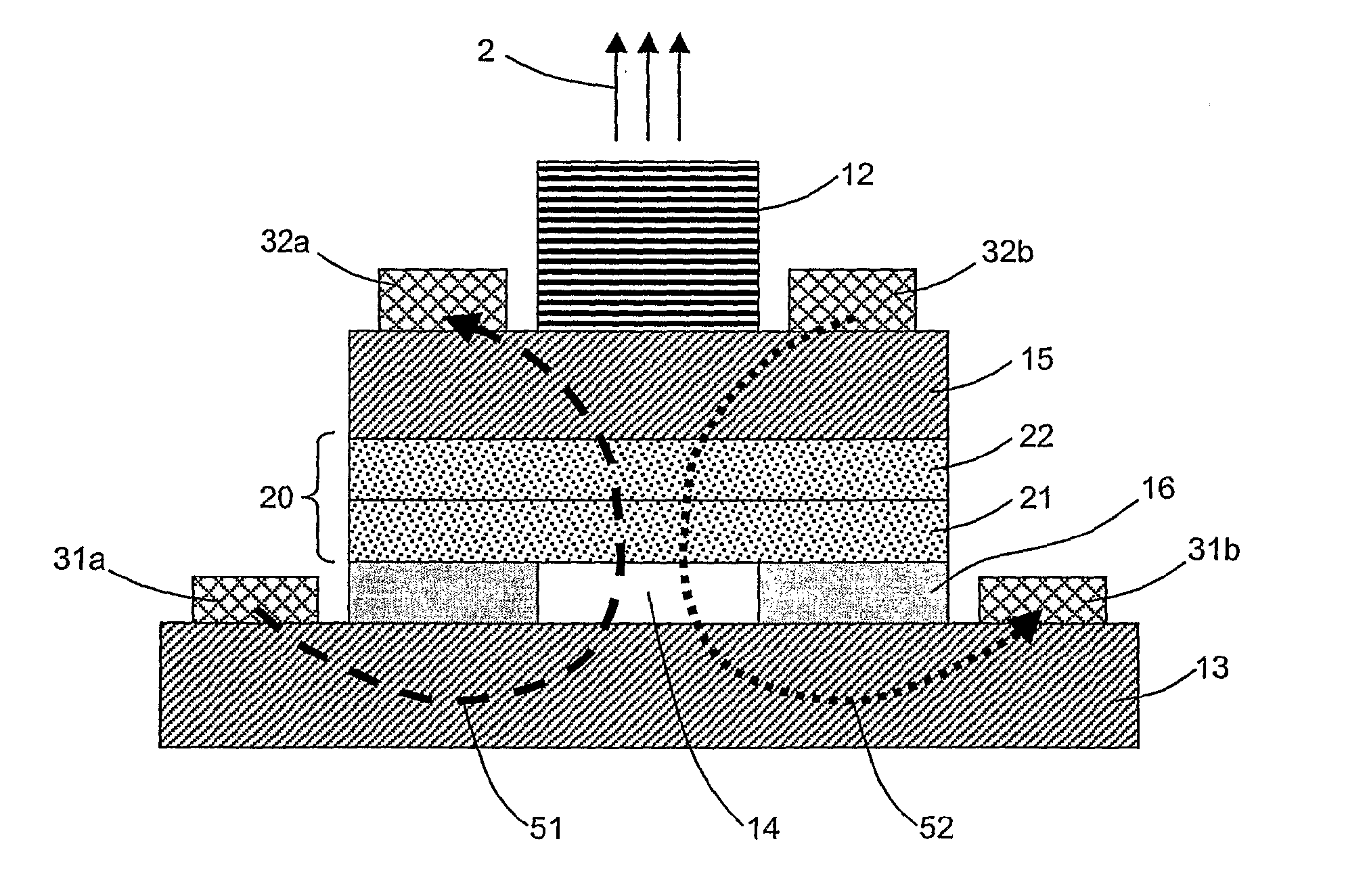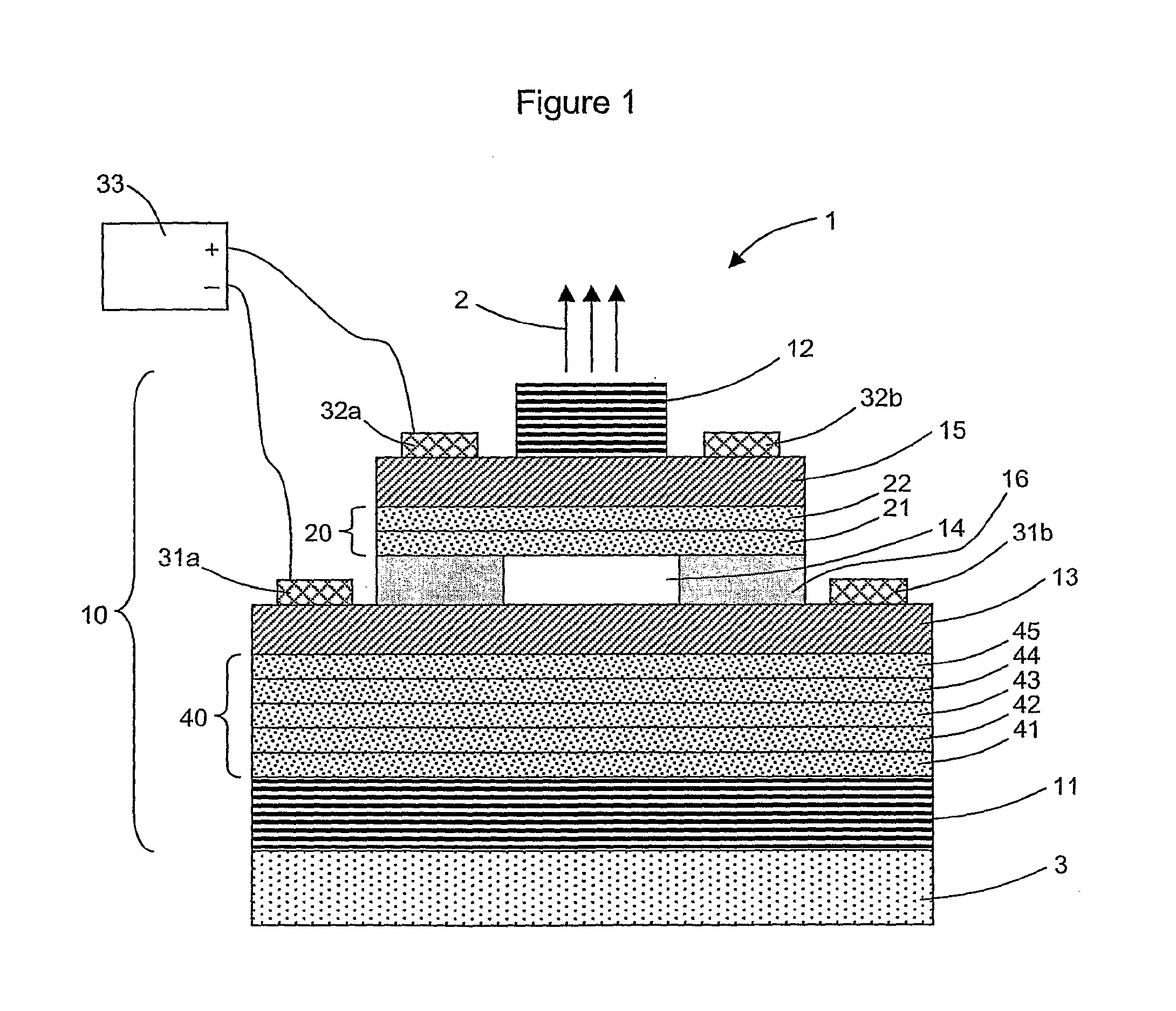Light emitting system according to a polariton mode with electrical injection of quantum wells
a light-emitting system and quantum well technology, applied in semiconductor lasers, laser details, laser optical resonator construction, etc., can solve the problems of loss of energy, impossibility of obtaining the laser effect, and great difficulty
- Summary
- Abstract
- Description
- Claims
- Application Information
AI Technical Summary
Benefits of technology
Problems solved by technology
Method used
Image
Examples
Embodiment Construction
[0046]As shown in FIG. 1, the system 1 for emitting light 2 according to a particular embodiment of the invention comprises a substrate 3 and an optical cavity 10. It is designed to operate in a specific emission wavelength.
[0047]In this embodiment, the system comprises two electrically injected quantum wells 21 and 22 and five non-injected quantum wells 41 to 45. This choice of the number of wells is imposed by the necessity for clarity in the figure. As such, those skilled in the art will be able to choose a more suitable number of quantum wells. In particular, a number of injected wells less than 5 can be chosen and a number of non-injected wells that is clearly higher which could be of a magnitude of 60 for a structure having GaN quantum wells. Those skilled in the art will note indeed that a large total number of quantum wells favors the polariton laser effect.
[0048]This system can be obtained according to an epitaxy technique via molecular beam on the substrate 3, which is a t...
PUM
 Login to View More
Login to View More Abstract
Description
Claims
Application Information
 Login to View More
Login to View More - R&D
- Intellectual Property
- Life Sciences
- Materials
- Tech Scout
- Unparalleled Data Quality
- Higher Quality Content
- 60% Fewer Hallucinations
Browse by: Latest US Patents, China's latest patents, Technical Efficacy Thesaurus, Application Domain, Technology Topic, Popular Technical Reports.
© 2025 PatSnap. All rights reserved.Legal|Privacy policy|Modern Slavery Act Transparency Statement|Sitemap|About US| Contact US: help@patsnap.com



